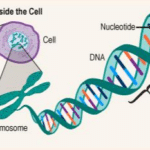Cloning and medicine go hand in hand for improvising healthcare
The technique of cloning results in similar genetic copies of living organisms.
Cloning and its procedures
In these genes, tissues, cells, and even whole animals are cloned to produce a varied species. There are some examples that exist naturally like bacteria which reproduce and make their exact copies. Humans give birth to identical twins. The clones contain equal amounts of genetic material (identical DNA) in both nuclei and mitochondria which are called true clones however clones may have identical DNA in the nucleus but different in mitochondria. The term coined by Herbert.J. Webber in his plant experiments with a twig came in popular reference in a general context and was used exclusively.
There are three different types of cloning:
- Gene Cloning
- Reproductive Cloning
- Therapeutic /Stem Cell Cloning
Gene cloning results in copies of genes or DNA segments which includes the process of transferring a gene from another organism, known as “foreign DNA,” into the genetic material of a vector carrier like Bacteria, yeast cells, viruses, and plasmids. Along with the insertion of the gene, the vector is placed in laboratory conditions that cause it to multiply, resulting in the gene being duplicated several times.
This technique of reproductive cloning refers to copies of the whole animal, that can be done with different methods for mammalian cell clones through the implantation of embryo thus, two methods are there:
Somatic Cell Nuclear Transfer: Dolly, the lamb, was a genetic clone of the adult female sheep who supplied the somatic cell. She was the first mammal to be cloned from an adult somatic cell. The process includes:
- Removal of the chromosome from egg to form enucleated egg
- Chromosomes are replaced with nuclei taken from the somatic cell of an individual to be cloned.
- The egg is stimulated and it starts to divide in some cases which leads to blastocyst.
- The blastocyst is sent to the uterus and implanted, resulting in further development which can give birth to animals.
Embryo splitting: This process includes IVF (in vitro fertilization) in which sperm and egg are fused together in laboratory conditions to form a zygote. The zygote divides further into two and then four identical cells and is implanted in the uterus.
The therapeutic cloning results in copies of embryonic stem cells which can be further used to replace injured or diseased tissues. these can be used to develop new treatments of diseases through different experiments. The source of embryonic cells formed is from the first five days when eggs start to divide. Stem cells can be harvested from cloned embryos which can lead to disruption in the embryo while still in the test tube.
Relation between Cloning and Medicine
The efficient cloning methods lay down the progress in medicinal and therapeutic benefits for humans. The highly cloned organisms can be used for further advances in the area of reproductive medicine, biotechnology, and cellular-based transplantation therapies for degenerative diseases.
The scientists have cloned other sheep for producing milk and giving it to a person whose blood doesn’t clot properly. Another use in treatment and testing of new drugs as the cloned ones are genetically identical so all will show a uniform effect of drugs. FDA also declared that meat and milk from cloned animals are safer from non-cloned animals.
Thus, Current cloning techniques, on the other hand, are the culmination of more than 40 years of research involving nuclei produced from nonhuman embryonic and fetal cells. Following the birth of Dolly, however, cloning technology’s potential has expanded to include ethically acceptable areas such as human cloning and embryonic stem cell research. This review aims to engage the reader with the science and ethics of this novel technology, as well as the consequences for medical professionals.
References:





